Also read: best free product analytics software
Understanding Demo Automation Software
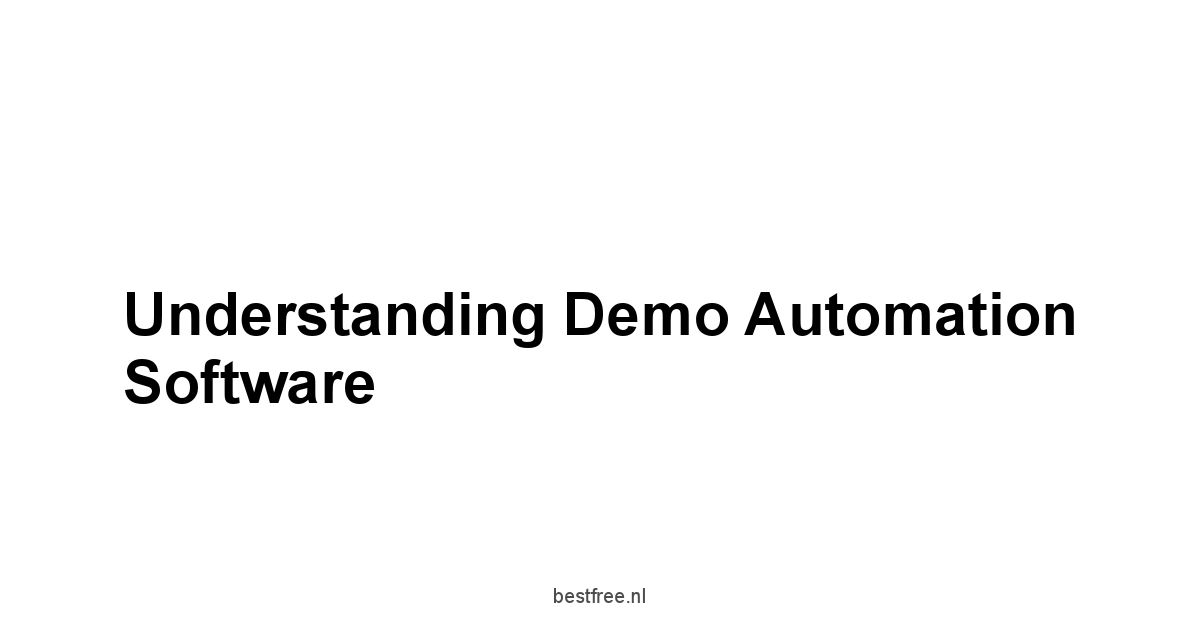
Definition and Purpose of Demo Automation
Demo automation software streamlines how businesses present products to potential clients.
It provides an interactive platform for users to engage with products in a simulated environment, allowing them to experience functionalities and see how software affects their operations.
The main purpose is to meet the growing demand for self-service among B2B buyers.
Today’s buyers seek autonomy, wanting to explore products on their own, not depend solely on sales representatives.
Thus, demo automation helps businesses optimize sales processes, saving time and resources while keeping high engagement with prospects.
It allows companies to deliver personalized experiences that resonate with diverse buyer needs.
Personalization comes from advanced features like tailored content, interactive demos, and user analytics—all enhancing the buyer’s journey.
The success of demo automation lies in its ability to engage buyers emotionally and intellectually, motivating them to advance in the sales process with confidence.
Evolution of Demo Practices in B2B Sales
B2B sales demonstrations have transformed over the years.
Sales representatives once dominated live demos, walking potential clients through features and functionalities.
This method wasted time and resources, especially with multiple stakeholders in the mix.
As the digital era arose, buyers demanded more flexibility and accessibility in their purchasing journeys.
A recent survey showed 75% of B2B buyers prefer self-service options, highlighting the need for businesses to adapt demo strategies. The integration of demo automation into sales practices marks a shift from traditional live demos. Modern solutions allow potential customers to explore products at their own pace. This shift improves efficiency and enhances engagement by empowering buyers to learn and interact comfortably.
Key Differentiators in Demo Automation Solutions
When assessing demo automation software, key differentiators affect product presentations. First is the ability to create personalized experiences. Leading automation tools enable customization for each buyer, showcasing features that fit their needs and interests. This approach fosters higher engagement and boosts conversion likelihood.
Another critical differentiator is analytics capabilities. Top demo automation software includes advanced reporting features that track user engagement, like time spent on features and viewer interactions. This data helps sales teams identify high-value leads and tailor follow-up strategies.
Moreover, integration capabilities are vital for smooth implementation. Robust integrations with CRM systems, marketing platforms, and communication tools enhance workflow and overall productivity. Businesses that prioritize these differentiators are likely to reap the full benefits of demo automation tools.
Also read: 8 best free email services
Types of Demo Automation Software Available
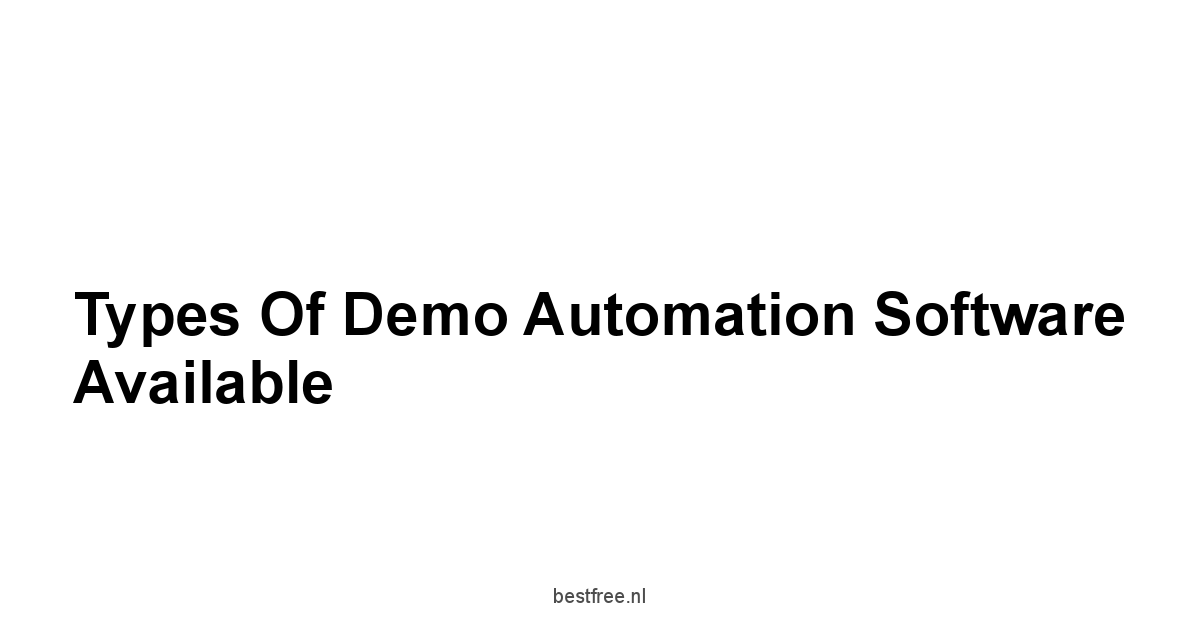
Video Demos: Overview and Benefits
Video demos form the core of demo automation software. They provide potential customers with a pre-recorded view of a product’s features and functions.
These demos tell a compelling story, narrated by product experts who lead viewers through key capabilities, showing how the product can add value.
The main benefit is accessibility. They can be shared easily via email, websites, and social media.
Interactive Demos: Enhancing User Engagement
Interactive demos elevate video presentations by letting users engage directly with the product’s interface.
With embedded elements, users can click through features, manipulate data, and explore functions tailored to their needs.
This interaction deepens connection, allowing users to envision their experience with the product.
Interactive demos boost engagement. Statistics show that interactive content generates two times higher engagement rates than static content. Their hands-on nature empowers buyers, reducing unqualified leads and aiding informed decisions.
Guided Product Tours: Facilitating User Navigation
Guided product tours are a focused type of demo automation software that directs users through specific features of a product’s interface.
These tours highlight key features and provide step-by-step navigation, valuable for onboarding new customers or complex software.
Guided tours ensure users discover essential functions, increasing understanding and satisfaction.
Using guided tours enhances user experience and lessens training demands on sales teams. Reports indicate that users who experience guided tours report a 37% increase in confidence using the software after initial interaction. This boost in confidence accelerates adoption rates and increases retention and product recommendations.
Sandbox Environments: Offering Hands-On Experience
Sandbox environments provide a different approach to demo automation, allowing users to engage with a product in a risk-free space.
In these setups, potential customers can test features and adjust settings, simulating real-world usage.
This hands-on experience is crucial, especially for complex solutions needing thorough exploration before commitment.
The benefit of sandboxes extends beyond engagement; they serve as a qualification tool for sales teams. By offering sandbox access, companies can measure user interest through engagement levels and testing behaviors. Research shows that prospects using sandbox environments have a 35% higher likelihood of converting into customers. Sandboxes effectively connect introduction and purchase, enabling buyers to evaluate a product’s capabilities with confidence.
Also read: 5 best free project management tools
The Advantages of Demo Automation Software
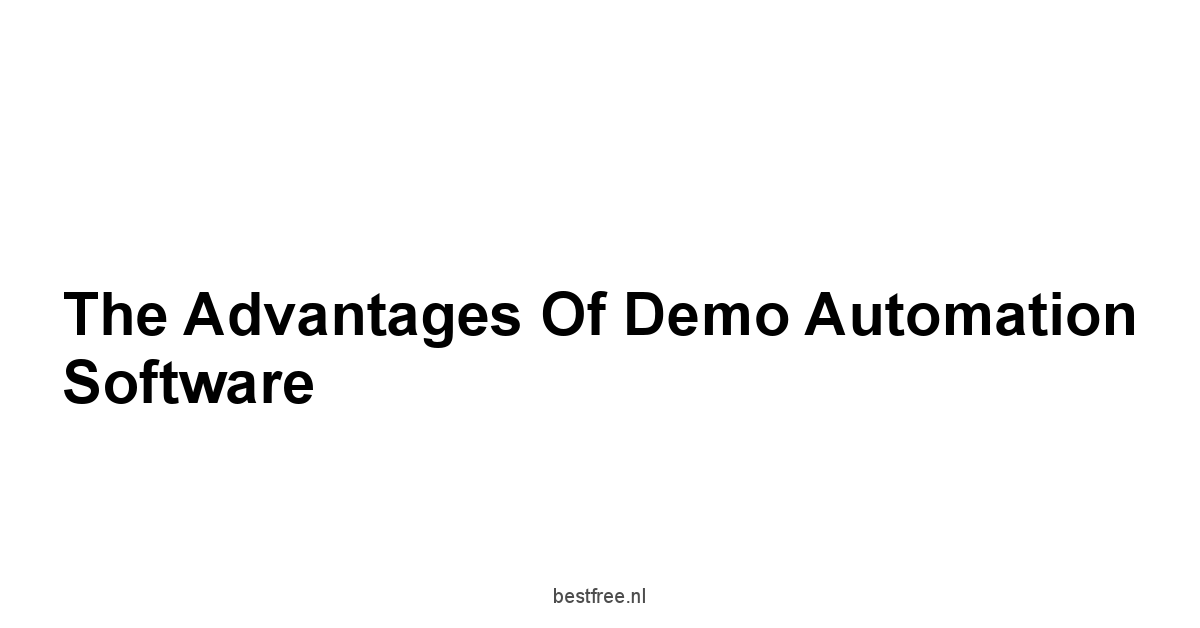
Shortening the Sales Cycle: Efficiency Redefined
Demo automation software shortens the sales cycle. Self-service demos reduce time spent on live presentations. Companies report up to 80% shorter sales cycles. This efficiency comes from less demo lag and fewer unqualified presentations, allowing sales teams to zero in on high-value prospects.
Buyers can gather information independently. They make informed decisions.
This relieves sales representatives. They can focus on nurturing qualified leads and building relationships.
Enabling Self-Service for Buyers: Promoting Autonomy
Buyer autonomy is a key advantage of demo automation software. Fast decisions matter in B2B transactions, with 77% of buyers saying self-service enhances their experience. Self-service empowers buyers to control their journey, exploring products on their own terms.
Demos align with buyers’ workflows and preferences.
This personalization fosters ownership and informed choices.
Empowered buyers are more likely to convert and show brand loyalty.
Reducing Resource-Intensive Live Demos: Saving Time
Live demos drain sales teams’ time and energy. Demo automation addresses this by minimizing live presentations. Businesses see an average 30% reduction in live demos, saving time.
Automation lets sales teams nurture relationships and craft tailored offerings instead of repeating presentations.
Sales teams can prepare more personalized follow-ups based on interaction data from automated demos, increasing conversion potential.
Improving Buyer Engagement: Creating Connections
Demo automation tools provide analytics to assess user interest, enhancing follow-up efforts.
Businesses build valuable connections by understanding buyer needs through captured interaction data.
Capturing Intent Data: Informing Sales Strategies
Capturing intent data is a powerful advantage of demo automation.
Analyzing user interactions offers insights that shape sales strategies.
Intent data includes metrics like engagement, feature usage, and sharing behavior, signaling buyer interest.
Research shows leveraging intent data can boost sales conversion rates by 20%. Monitoring this data allows sales teams to prioritize follow-ups with high-potential leads and personalize interactions, refining the sales process and aligning sales with marketing efforts.
Also read: 7 best free file compression software
Essential Features to Look for in Demo Automation Tools
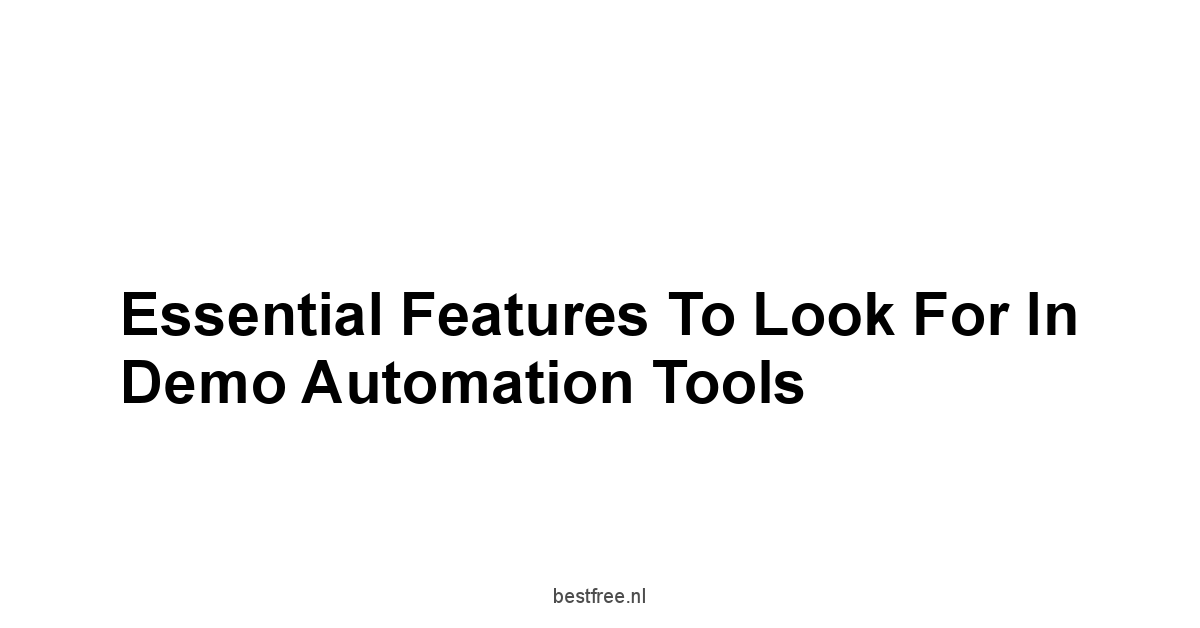
AI and Automation for Enhanced Personalization
As businesses seek better personalization, AI-driven features in demo automation tools are crucial. Over 80% of sales teams benefit from AI in revenue efforts. AI enhances demo automation, improving engagement. Tailored recommendations guide buyers to relevant features based on interests and past actions.
AI also accelerates demo creation, automating video edits, content choice, and user prompts.
With AI, producing multiple demos quickly is possible, allowing teams to deliver consistent, personalized experiences.
Customization Options for Tailored Experiences
A key feature of demo automation is its ability to offer customization that meets diverse buyer needs. 70% of consumers expect personalization from sellers. Customization options include dynamic content, personalized greetings, and tailored demo paths based on user preferences.
These features make each demo relevant, addressing unique challenges of prospects.
Customization enhances the buyer’s perception and boosts the chances of a positive purchasing decision.
Detailed Analytics and Reporting Capabilities
In a data-driven world, access to detailed analytics is essential for businesses using demo automation software. Comprehensive reporting provides insights on prospect engagement: interaction duration, popular features, and areas of interest. Studies show businesses with detailed engagement metrics can see up to a 35% increase in qualified leads.
Analytics help sales teams make informed follow-up decisions, ensuring timely outreach to high-potential prospects.
Insights also reveal what aspects of the demo resonate with buyers, guiding continuous improvement of demo content.
Integration with Existing Tech Stacks
Seamless integration with technology stacks is a critical feature in choosing demo automation software.
An integrated platform connects essential tools like CRM systems, marketing platforms, and communication apps, streamlining workflows.
This connectivity allows companies to share demo content easily and track interactions across channels.
Effective integration improves operational efficiency, collaboration, and data management.
Organizations prioritizing integration maximize their demo automation ROI.
Also read: 7 beste gratis presentatiesoftware
The Leading Demo Automation Software Tools of 2025
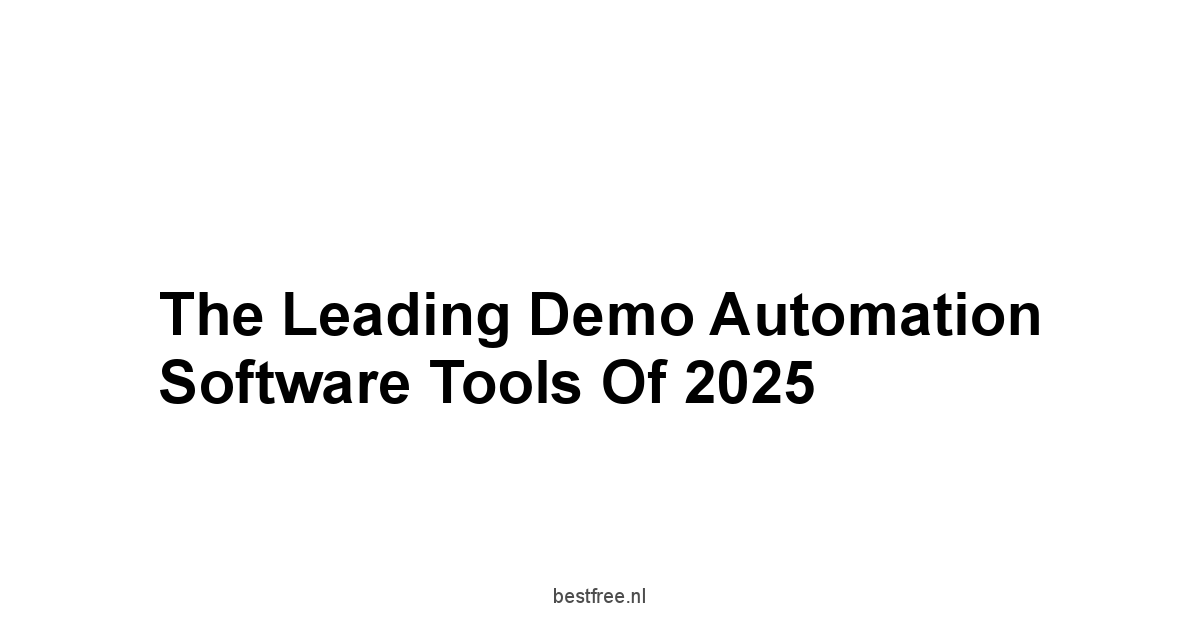
Consensus: Interactive and Automated Demos
Consensus transforms product demonstrations.
It lets users create interactive, automated demos, allowing buyers to engage on their terms.
The platform mixes video, product tours, and customizable content for a complete demo experience.
Consensus tracks user intent, helping sales teams analyze engagement and follow up effectively. Stronger communication leads to higher conversion rates—50% larger deal sizes and a 30% cut in sales cycles. Consensus is not just a tool; it is a solution that maximizes demos.
Storylane: Personalized Guided Demos
This platform uses artificial intelligence, enabling users to create sandbox environments for direct product interaction.
A browser extension lets users record demos easily.
With five pricing tiers, Storylane serves businesses of every size.
Its user-friendliness and ability to tailor flows based on user intent make it essential for any sales team.
This blend of personalization and access is vital for engaging today’s buyers.
Navattic: Self-Guided Interaction Experiences
Navattic offers self-guided demos that mimic actual software.
Users can clone applications and personalize experiences with custom prompts and links.
This setup allows prospects to explore products independently while tracking engagement metrics.
Navattic’s simplicity, combined with its analytics, provides insights for future strategies.
Walnut: Capturing and Sharing Software Demos
Walnut employs a browser extension for capturing software screens and creating interactive demos in real-time.
Its guided structures help users tailor content for different audiences, addressing various buying personas.
With features for sharing and integration into sales tools, Walnut is versatile in demo automation.
Strong customer support and customization have built a loyal user base, recommending Walnut for its enjoyable experience and helpful assistance.
Reprise: Live and Interactive Product Presentations
Reprise delivers a dynamic solution for live, interactive product demonstrations.
It allows users to choose between screen captures and application data for showcasing features.
Tailored demo workflows create a bespoke experience for each viewer.
Though pricing is customized, users praise Reprise for easy demo creation and supportive service, making it a compelling choice for robust demo automation.
Also read: 5 beste gratis tekenprogrammas
Best Practices for Choosing the Right Demo Automation Tool
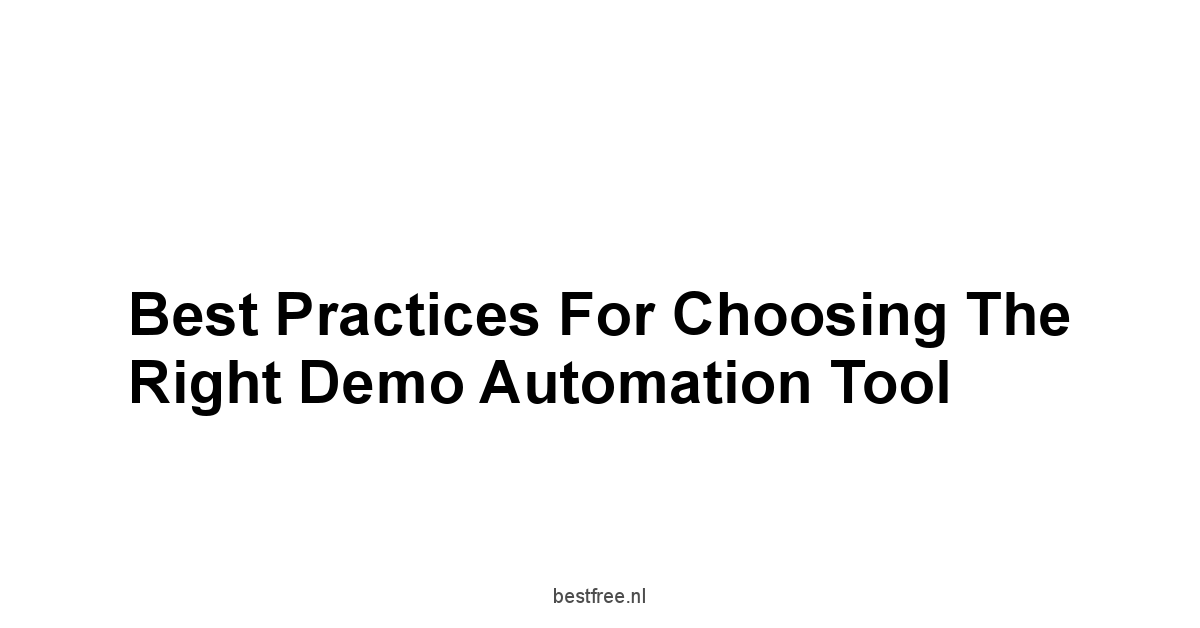
Assessing Team Needs and Objectives
Before selecting a demo automation tool, assess your team’s needs and objectives.
Understand the specific challenges of your sales and marketing teams. Identify key functionality to enhance the demo process.
A list of goals can clarify which software aligns best.
Consider factors like company size, target audience, and types of products sold to ensure the tool meets requirements.
Evaluating User Experience and Support
User experience is vital for the successful implementation of any new tool.
When evaluating demo automation software, prioritize platforms with intuitive interfaces and thorough onboarding.
A user-friendly experience is essential for quick adoption.
Quality customer support is crucial for troubleshooting and maximizing the software’s potential.
Prospective users should seek feedback on customer assistance from existing users.
Considering Scalability and Future Growth
Select a demo automation tool that accommodates future growth.
Consider how well the product supports more users, new features, or integrations as your business expands.
A scalable solution offers benefits without frequent replacements.
Also, consider the pricing structure and how it might change as your team grows.
Understanding this helps forecast ongoing investment aligned with your business planning.
Conducting Demos and Trials
Before finalizing a demo automation tool, take advantage of free trials or live demos.
This hands-on experience helps teams assess ease of use and feature functionality.
Collect feedback from potential users to gauge their comfort with the tool.
Conducting demos allows teams to compare offerings, ensuring a choice fits your organization’s requirements.
Also read: 5 best free translation software
Leveraging Demo Automation for Increased Sales
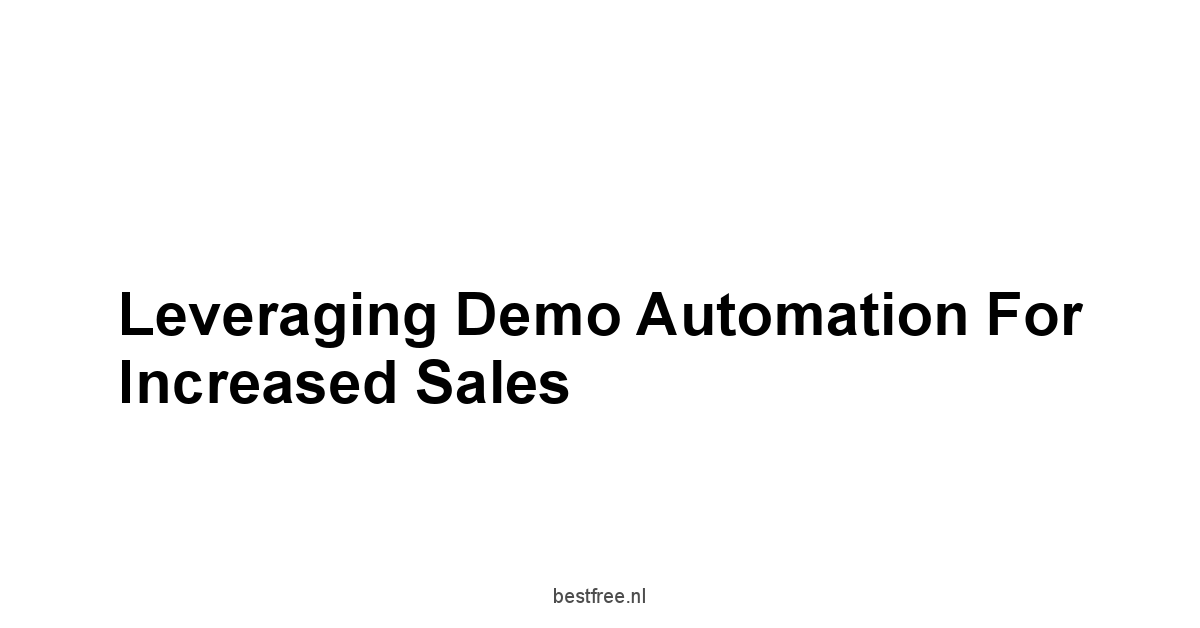
Transforming Demos into High-Impact Sales Tools
Demo automation software changes traditional demos from simple presentations into powerful sales tools.
With interactive content, companies capture potential buyers’ attention and lead them to connections with products.
Advanced features, like analytics and customer insights, enable sales teams to tailor follow-up strategies.
Statistics show that businesses using demo automation tools see significant sales increases. Companies achieve an average 30% lift in conversion rates after implementation. Enhanced interactions simplify decisions and improve engagement.
Aligning Sales and Marketing Through Automation
Integrating demo automation tools creates synergy between sales and marketing teams.
By sharing insights and using analytics, both teams work together more effectively, driving consistent messaging and improving the buyer experience.
Automated demos speed up onboarding and responses to buyer interest.
Consequently, businesses build stronger relationships with potential clients through relevant demos, increasing conversion chances and nurturing brand loyalty.
This collaborative approach fosters real connections and positions the organization as customer-focused.
Streamlining Onboarding Processes with Automated Demos
Onboarding new clients can be tedious and complex.
Automated demos simplify this process.
By offering tailored, self-guided tours and access to resources, organizations reduce friction and accelerate onboarding.
Statistics support this: 80% of consumers report a better onboarding experience with automated demos. Streamlining this vital phase enhances client satisfaction and ensures understanding of service capabilities from the start. Effective onboarding boosts retention and empowers users to utilize products fully.
Also read: best ai writing assistants in 2025
Future Trends in Demo Automation Software
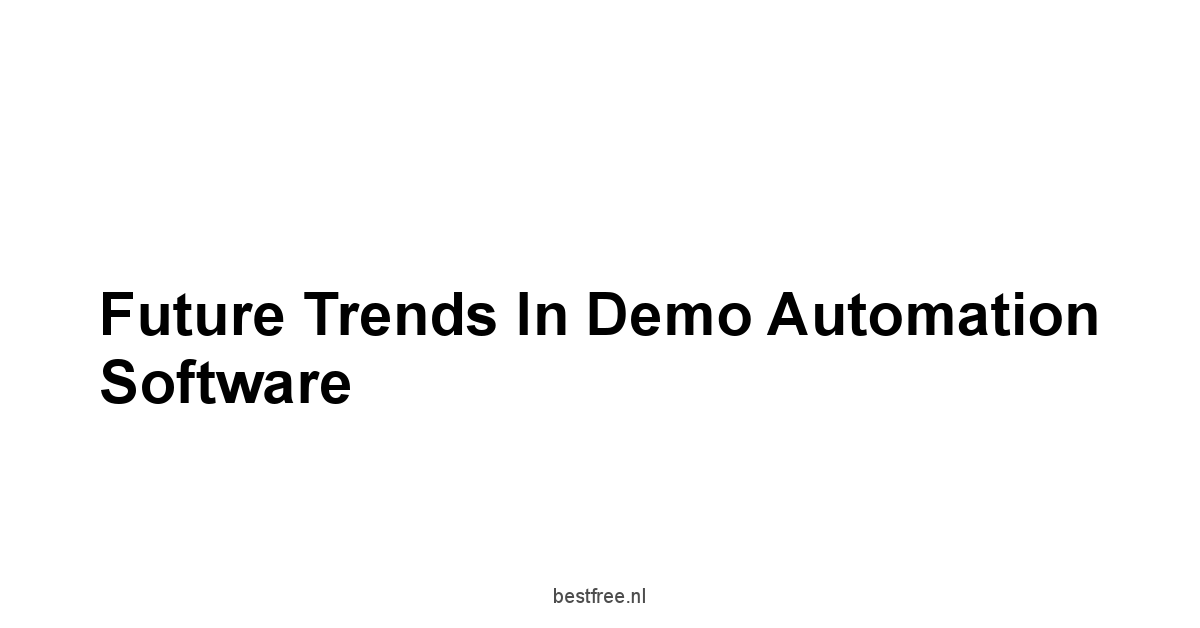
The Role of AI in Shaping Automation Futures
AI will transform demo automation software.
Businesses need data-driven strategies. AI in demo tools is key for personalized buyer experiences.
Predictive analytics, machine learning, and natural language processing will enhance demo automation. They offer insights that improve prospect engagement.
AI can optimize content delivery. It supports real-time interactions, ensuring demos resonate with users.
Advancements in User Interaction and Engagement
Innovations will improve user interaction and engagement with demo tools.
Features like virtual reality VR and augmented reality AR will change product demonstrations. They provide immersive experiences that let buyers see products in real life.
As these technologies grow accessible, businesses can create engaging content that connects with potential buyers.
Better buyer interaction builds stronger emotional ties, increasing trust and conversion rates.
Increasing Demand for Customization and Integrations
B2B buyers expect tailored experiences. Platforms offering personalization will stand out.
This includes integrating with existing workflows and tech stacks. It ensures smooth communication between sales, marketing, and customer service teams.
Businesses must prioritize tools with customization flexibility while ensuring usability and accessibility.
As organizations aim for exceptional buyer experiences, integration, customization, and AI will define the future of demo automation software.
Also read: 6 best free website analytics tools
Final Thoughts
The benefits of demo automation software are clear. Sales cycles shorten. Engagement improves. This is not a trend. It is a shift in how businesses connect with their customers. 80% of companies report less time spent on live demos. Resources can be shifted to strategic pursuits while sales teams build relationships with valuable prospects. Automation saves time and eliminates repetitive tasks. This allows focus on what matters: personalized customer experiences.
The future of demo automation is bright, especially with AI advancements and interactive technologies.
Early adopters embrace change, using predictive analytics and machine learning for tailored interactions that align with buyer interests.
As this technology evolves, companies that adapt their demo strategies will hold a competitive edge, ready for the expectations of informed buyers.
In the end, utilizing demo automation software enhances buyer engagement and aligns sales with marketing.
Breaking down barriers fosters collaboration, creating a unified approach that resonates with potential clients.
Capturing intent data and crafting follow-ups based on sound analytics enhances relationships and builds loyalty.
Embracing this change ensures organizations meet and exceed customer expectations in a dynamic marketplace.
Also read: best braze consulting services in 2025
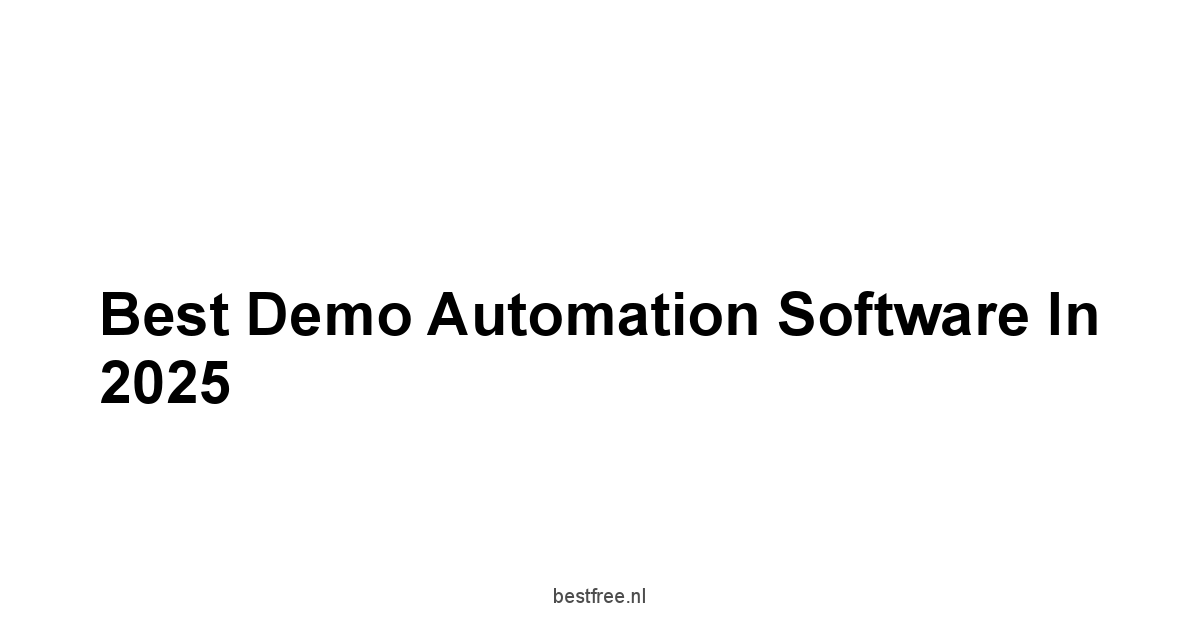




Leave a Reply